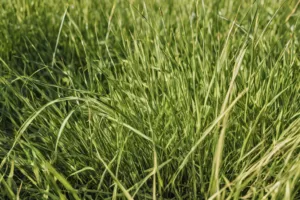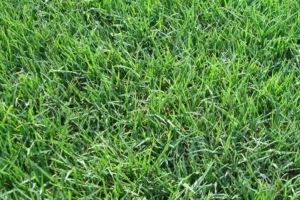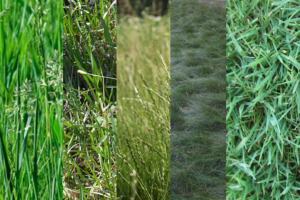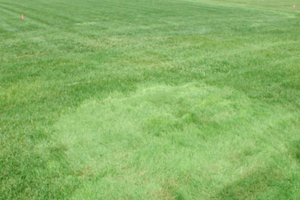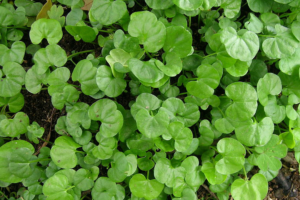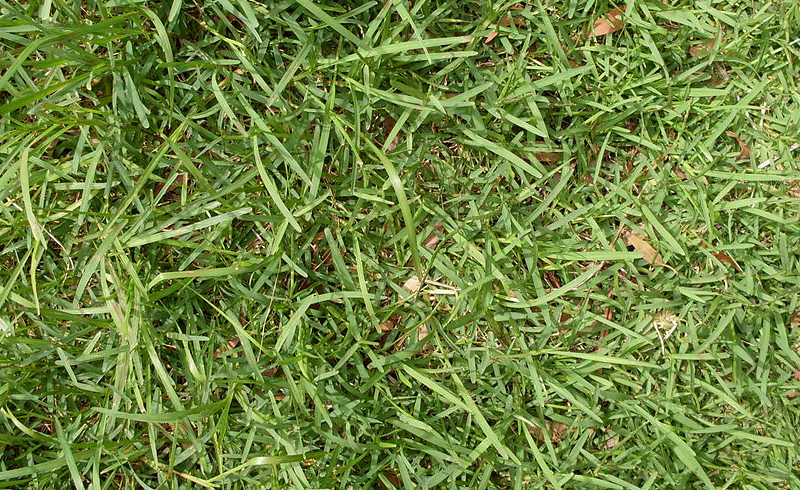
Introduction
Brief Overview of Buffalo Grass
Buffalo Grass, scientifically known as Bouteloua dactyloides, is a perennial, warm-season grass species. It is native to the Great Plains from Montana to Mexico. Buffalo Grass has gained popularity in landscaping and restoration because of its drought tolerance and minimal maintenance requirements. Its name is derived from its association with the American bison, colloquially known as buffalo, as it was a primary food source for these majestic creatures that once roamed the Great Plains in large numbers.
Buffalo Grass is unique in its growth habit, presenting a soft, blue-green hue that can transform into a beautiful straw color during its dormant period in the winter months. It is a dioecious species with separate male and female plants. The male plants produce pollen on tall stems, while the female plants produce seeds in bur-like clusters. This unique characteristic adds to the visual interest of Buffalo Grass, making it a versatile choice for various landscaping designs.
Importance and Relevance of Buffalo Grass
The importance of Buffalo Grass extends beyond its aesthetic appeal. As a native grass species, it plays a crucial role in maintaining biodiversity and ecological balance in the regions where it naturally occurs. It provides a habitat for various wildlife and contributes to soil health by preventing erosion with its dense network of roots. Moreover, its ability to thrive in harsh conditions, such as drought and poor soil, makes it a vital ecosystem component, particularly in areas prone to desertification.
From a landscaping perspective, Buffalo Grass offers a low-maintenance and environmentally friendly alternative to traditional lawn grasses. It requires less water and less mowing and is generally resistant to pests and diseases. This makes it an excellent choice for sustainable landscaping, contributing to water conservation efforts and reducing the need for chemical fertilizers and pesticides. Its growing popularity reflects a broader trend towards more sustainable and ecologically responsible gardening practices.
History and Origin of Buffalo Grass
Where Buffalo Grass Originated
Buffalo Grass is a valid North American native grass species. Its roots trace back to the Great Plains’ vast prairies, stretching from the Rocky Mountains to the Mississippi River and from southern Canada to Mexico. This resilient grass species evolved over thousands of years to adapt to the harsh conditions of the plains, including extreme temperatures, drought, and grazing by large herbivores.
The name “Buffalo Grass” itself is a nod to its history. The grass was a primary food source for the millions of American bison, often referred to as buffalo, that once roamed the Great Plains. The bison and the grass coexisted in a symbiotic relationship, with the bison grazing on the grass, helping to spread its seeds and maintain the health of the prairie ecosystem.
How it Spread Across Different Regions
The spread of Buffalo Grass beyond the Great Plains can be attributed to natural and human factors. Naturally, the grass’s seeds were dispersed by wind, water, and animals, allowing it to colonize new areas. However, human intervention played a significant role in its spread. As settlers moved across North America, they recognized the value of Buffalo Grass for grazing livestock and began introducing it to new areas.
In recent years, the popularity of Buffalo Grass has surged due to its low-maintenance characteristics and its resilience in the face of drought. It has been introduced to various parts of the world, including Australia and South Africa, for lawns, golf courses, and parks. Despite its global spread, Buffalo Grass remains a symbol of the American prairie, a testament to the resilience and beauty of the natural landscapes of the Great Plains.
Characteristics of Buffalo Grass
Physical Description (Color, Size, Texture)
Buffalo Grass is a low-growing, warm-season perennial grass. It typically reaches a height of 4 to 6 inches, although it can grow taller under optimal conditions. The grass forms a dense sod with narrow, curly leaves that give it a unique texture. The color of Buffalo Grass is one of its most appealing features. It exhibits a soft, blue-green hue during the growing season that can add a beautiful touch to any landscape. In the winter, the grass goes dormant and turns a straw-like color, providing visual interest throughout the year.
The grass is dioecious, meaning it has separate male and female plants. The male plants produce pollen on tall stems that rise above the leaves, while the female plants produce seeds in bur-like clusters. This characteristic can lead to variations in the appearance of Buffalo Grass lawns, depending on whether they are composed of male plants, female plants, or a mixture of both.
Growth Habits and Life Cycle
Buffalo Grass is a warm-season grass that grows most actively during the warmer months. It begins to green up in late spring, reaches peak growth in the heat of the summer, and goes dormant in the fall as temperatures drop. The grass spreads by seeds and stolons (above-ground stems), forming a dense sod that can outcompete weeds.
The life cycle of Buffalo Grass is adapted to the conditions of the Great Plains. It is a perennial grass that comes back yearly from the same root system. During the growing season, it invests a lot of energy into root growth, which allows it to survive harsh conditions such as drought and grazing. This deep root system, which can extend several feet into the ground, is one of the keys to the resilience and durability of Buffalo Grass.
Unique Features and Adaptations
Buffalo Grass has several unique features and adaptations that have allowed it to thrive in the challenging conditions of the Great Plains. Its deep root system allows it to access water and nutrients well below the soil surface, enabling it to survive periods of drought. Its low-growth habit reduces water loss through transpiration and helps it avoid damage from grazing or mowing.
Another unique adaptation of Buffalo Grass is its ability to go dormant during periods of stress. The grass will turn a straw-like color in response to drought or cold temperatures and stop growing. This dormancy allows it to conserve resources and survive until more favorable conditions return. Despite its dormant appearance, the grass is still alive and will green up again when conditions improve. This ability to “bounce back” from stress makes Buffalo Grass a resilient and sustainable choice for lawns and landscapes.
Environmental Requirements for Buffalo Grass
Climate and Temperature Needs
Buffalo Grass is a warm-season grass that thrives in regions with hot summers and mild winters. It is native to the Great Plains of North America, where temperatures can range from very hot in the summer to very cold in the winter. Buffalo Grass can tolerate these temperature extremes thanks to its ability to go dormant during periods of cold or drought.
While Buffalo Grass can survive cold winters, it prefers warmer temperatures for growth. The grass begins to green up when soil temperatures reach around 50 degrees Fahrenheit (10 degrees Celsius) in the spring, and it grows most actively when temperatures are between 80 and 95 degrees Fahrenheit (27 to 35 degrees Celsius). Above or below these temperatures, the growth of Buffalo Grass will slow down, and it may go dormant to conserve resources.
Soil Type and Nutrient Requirements
Buffalo Grass is highly adaptable when it comes to soil types. It can grow in a range of soils, from sandy to clayey, as long as they are well-drained. The grass prefers slightly alkaline soils with a pH between 6 and 8, typical of the soils in its native range on the Great Plains.
In terms of nutrients, Buffalo Grass has low to moderate requirements. It can grow in poor soils where other grasses struggle, thanks to its deep root system that can access nutrients well below the soil surface. However, it can benefit from occasional fertilization for optimal growth and appearance. It’s important to note that over-fertilization can lead to problems such as thatch buildup and increased water requirements. So, it’s best to fertilize sparingly and according to soil test recommendations.
Water and Sunlight Needs
One of the main advantages of Buffalo Grass is its low water requirements. Once established, it can survive on as little as 1.5 inches of water per month, making it an excellent choice for regions with limited rainfall or water restrictions. However, while Buffalo Grass is drought-tolerant, it will go dormant and turn a straw-like color if not watered during dry periods. For a green lawn throughout the summer, supplemental watering may be necessary.
As for sunlight, Buffalo Grass prefers full sun. It needs at least 6 to 8 hours of direct sunlight daily for optimal growth. In shaded areas, the grass may become thin and sparse. Other grass species or shade-tolerant ground covers may be better if your lawn has significant shade.
Benefits and Uses of Buffalo Grass
Ecological Benefits (Erosion Control, Habitat, etc.)
Buffalo Grass offers several ecological benefits that make it a valuable addition to the landscape. Its dense growth habit and extensive root system help to prevent soil erosion, making it an excellent choice for slopes and other areas where soil stability is a concern. The grass also contributes to carbon sequestration, helping mitigate climate change’s effects.
In addition, Buffalo Grass provides habitat for a variety of wildlife. Its seeds are a food source for birds and small mammals, and its dense growth provides cover for insects and other small creatures. By choosing Buffalo Grass for your lawn or landscape, you can contribute to local biodiversity and create a more sustainable and wildlife-friendly environment.
Landscaping Uses and Benefits
Buffalo Grass is increasingly popular in landscaping due to its low maintenance requirements and aesthetic appeal. Its soft, blue-green color and fine texture make it an attractive choice for lawns, while its low growth habit means it requires less mowing than many other grass species. Some homeowners choose to let Buffalo Grass grow naturally, creating a meadow-like effect that can be a beautiful alternative to a traditional lawn. In addition to home lawns, Buffalo Grass is used in various other landscaping applications. It’s a popular choice for parks, golf courses, and other large areas where low maintenance and drought tolerance are essential. Its ability to grow in poor soils makes it suitable for reclamation projects and other situations where soil quality is a concern.

Other Uses (Historical, Cultural, etc.)
Beyond its ecological and landscaping benefits, Buffalo Grass has historical and cultural significance. As a native grass of the Great Plains, it played a crucial role in the ecosystem that supported the American bison and the Native American tribes that depended on them. The grass was used by Native Americans for various purposes, including as a food source and building material.
Today, Buffalo Grass continues to be valued for its resilience and beauty. It serves as a symbol of the American prairie and a reminder of the importance of native plants in our landscapes. By choosing Buffalo Grass for your lawn or landscape, you can be part of preserving this vital piece of our natural heritage.
How to Grow and Care for Buffalo Grass
Planting Buffalo Grass (Seeds, Plugs, Sod)
Three main ways to establish a Buffalo Grass lawn are seeding, planting plugs, or laying sod. Seeding is the most economical method but requires more time and care to ensure successful establishment. Buffalo Grass seeds can be sown in late spring or early summer when soil temperatures are consistently above 60 degrees Fahrenheit (15 degrees Celsius). The seeds should be lightly covered with soil and kept moist until germination, usually within 1 to 3 weeks.
Planting plugs or laying sod can provide a more instant lawn, but these methods are more labor-intensive and costly. Plugs are small sections of sod with established Buffalo Grass planted at intervals across the lawn area. Over time, the grass spreads to fill in the gaps. Sod is a layer of soil with mature Buffalo Grass laid over the lawn area for an instant lawn. Both plugs and sod should be planted in the spring or early summer and watered regularly until the grass is established.
Watering and Fertilizing Needs
Once established, Buffalo Grass requires minimal watering and fertilizing. It is a drought-tolerant grass that can survive on natural rainfall in many regions. However, supplemental watering may be necessary during prolonged dry periods to prevent the grass from going dormant. It’s important to water deeply and infrequently to encourage profound root growth.
As for fertilizing, Buffalo Grass has low nutrient requirements and can grow in poor soils. However, an annual application of slow-release nitrogen fertilizer can benefit a greener and more lush lawn. It’s best to fertilize in the early summer when the grass is actively growing, and always follow the fertilizer manufacturer’s instructions to avoid over-fertilization.
Mowing and Maintenance Practices
Buffalo Grass is a low-maintenance grass that requires less mowing than many other lawn grasses. Its optimal mowing height is 2 to 3 inches, and it can be mowed once a month or even less frequently, depending on your lawn preferences. Leaving the grass clippings on the lawn after mowing can help to return nutrients to the soil and reduce the need for fertilization.
Other maintenance practices for Buffalo Grass include dethatching and aerating. Thatch is a layer of dead grass and other organic matter that can build up on the soil surface, and excessive thatch can prevent water and nutrients from reaching the grassroots. Dethatching can be done as needed using a dethatching rake or machine. Aerating involves creating small holes in the soil to improve the grass roots’ air, water, and nutrient movement. This can be done every 2 to 3 years using a lawn aerator.
Common Pests and How to Manage Them
While Buffalo Grass is generally resistant to many common lawn pests, it can occasionally be affected by certain insects and diseases.
1. Grubs: Grubs, the larvae of various types of beetles, can be a problem for Buffalo Grass. These pests feed on the grass’s roots, causing lawn patches to turn brown and die. Signs of a grub infestation include spongy-feeling turf and visible grubs in the soil. Grub control methods include applying beneficial nematodes or milky spores to the lawn, which are natural predators of grubs. There are also chemical insecticides available, but these should be used as a last resort due to their potential impact on beneficial insects and the environment.
2. Chinch Bugs: Chinch bugs are small insects that feed on the sap of grass plants, causing yellow patches that can eventually turn brown and die. Chinch bugs can be challenging to spot due to their small size, but signs of their presence include irregularly shaped patches of yellow or brown grass that do not improve with watering. Chinch bugs can be controlled by introducing natural predators, such as ladybugs and spiders, or by applying a lawn insecticide if the infestation is severe.
3. Diseases: Buffalo Grass is resistant to most common lawn diseases, but it can sometimes be affected by leaf spots and rust. These diseases cause spots or patches on the grass blades, leading to lawn thinning. They are most likely to occur in wet conditions or when the grass is stressed by drought or nutrient deficiency. Disease control methods include improving lawn care practices (such as watering and fertilizing), applying a fungicide, or reseeding or resodding the affected areas in severe cases.
Remember, the best defense against pests and diseases is a healthy, well-maintained lawn. Regular watering, fertilizing, and mowing can help to keep your Buffalo Grass lawn in top shape and more resistant to pests and diseases.
Common Challenges and Solutions in Growing Buffalo Grass
Difficulty in Establishing Buffalo Grass
One of the challenges in growing Buffalo Grass is the difficulty in establishing it, especially from seeds. The germination rate of Buffalo Grass seeds can be pretty low, and faster-growing weeds often outcompete the seedlings. Preparing the soil properly before planting is essential to overcome this challenge, removing existing weeds and keeping the soil moist until the grass is established. Planting Buffalo Grass from plugs or sod can also be a more reliable way to establish a new lawn, although these methods are more costly.
Another factor that can affect the establishment of Buffalo Grass is the soil condition. While Buffalo Grass can tolerate a range of soil types, it prefers well-drained, slightly alkaline soils. If your soil is heavy clay or acidic, you may need to amend it with organic matter or lime to improve its suitability for Buffalo Grass.
Competition with Weeds
Buffalo Grass is a slow-growing grass, making it susceptible to competition from weeds, especially during establishment. Fast-growing weeds can quickly take over a new Buffalo Grass lawn before the grass can spread and form a dense sod. To prevent this, it’s essential to remove existing weeds before planting Buffalo Grass and to keep an eye out for new weeds as the lawn establishes. Regular mowing can also help to control weeds by preventing them from setting seeds.
In established Buffalo Grass lawns, weed control can be achieved through cultural practices and selective herbicides. Maintaining a dense, healthy lawn through proper watering, fertilizing, and mowing can help to prevent weed invasion. If weeds become a problem, selective herbicides can control them without harming the Buffalo Grass. Please follow the herbicide manufacturer’s instructions to get the best results.
Limited Shade Tolerance
Buffalo Grass is a sun-loving grass requiring at least 6 to 8 hours of direct sunlight daily. It has limited shade tolerance and may become thin and sparse in shaded areas. Buffalo Grass may not be the best choice if your lawn has significant shade. Instead, consider other grass species or shade-tolerant ground covers better suited to your site conditions.
If you’re determined to grow Buffalo Grass in a partially shaded area, a few strategies can help. First, increase the light reaching the grass by pruning overhanging trees or shrubs. Second, adjust your lawn care practices to suit the conditions. Grass growing in shade often requires less water and fertilizer than grass growing in full sun, and it may need to be mowed less frequently. With careful management, it may be possible to maintain a healthy Buffalo Grass lawn even in less-than-ideal conditions.
Case Studies on Buffalo Grass
Buffalo Grass in Sustainable Landscaping
While specific case studies are unavailable, Buffalo Grass is frequently mentioned in discussions about sustainable landscaping. For example, the University of California’s Division of Agriculture and Natural Resources recommends Buffalo Grass as a low-water-use plant that can help homeowners conserve water sources. Similarly, the City of Austin’s Grow Green program includes Buffalo Grass in its plant guide as a native, drought-tolerant option for lawns source.
Buffalo Grass for Erosion Control
Buffalo Grass’s role in erosion control is also well-documented. For instance, a study published in the Journal of Soil and Water Conservation found that Buffalo Grass was effective in reducing soil loss on a reclaimed coal mine site source. While this is not a case study in the traditional sense, it does provide scientific evidence of Buffalo Grass’s value in erosion control.
Buffalo Grass is a Low-Maintenance Lawn Grass
Finally, Buffalo Grass’s value as a low-maintenance lawn grass is widely recognized. For example, the University of California Statewide Integrated Pest Management Program notes that Buffalo Grass requires less mowing, watering, and fertilizing than most other lawn grasses. This makes it an excellent choice for homeowners looking to reduce their lawn maintenance efforts and environmental impact.
While these are not case studies in the traditional sense, they do provide valuable insights into the benefits and uses of Buffalo Grass. For more detailed information, consider contacting local extension services, universities, or landscaping professionals who may have conducted their trials or research on Buffalo Grass.
The Environmental Impact of Buffalo Grass
Water Conservation
Buffalo Grass is a drought-tolerant species, requiring significantly less water than many other types of turf grass. This makes it an excellent choice for regions where water conservation is a priority. By choosing Buffalo Grass for your lawn, you can help reduce the water used for irrigation, which is particularly important in areas where water resources are scarce or under pressure.
Moreover, Buffalo Grass’s deep root system allows it to use the water it does receive efficiently. These roots can reach depths of up to 5 feet, allowing the grass to access moisture deep in the soil. This helps the grass survive during dry periods, reduces runoff, and promotes water infiltration into the soil, contributing to groundwater recharge.
Reduced Fertilizer and Pesticide Use
Buffalo Grass’s low nutrient requirements mean that it requires less fertilizer than many other lawn grasses. This reduces the risk of nutrient runoff, which can contribute to water pollution. High levels of nutrients in water bodies can lead to problems such as algal blooms, which can harm aquatic life and make the water unsafe for recreation or drinking.
In addition, Buffalo Grass is resistant to many common lawn pests and diseases, reducing the need for pesticides. Pesticides can harm non-target organisms, including beneficial insects, birds, and aquatic life. They can also pose risks to human health. By choosing pest-resistant grass like Buffalo Grass, you can help to reduce these risks.
Carbon Sequestration
Like all plants, Buffalo Grass absorbs carbon dioxide from the atmosphere during photosynthesis, helping to mitigate climate change. While all grasses sequester carbon to some extent, the deep root system of Buffalo Grass means that it can store more carbon in the soil than many other lawn grasses. This makes it a valuable tool for reducing atmospheric carbon dioxide levels.
Furthermore, because Buffalo Grass requires less mowing than many other grasses, it can help to reduce carbon emissions from lawn mowing. Lawnmowers, particularly gas-powered ones, can produce significant greenhouse gases. Reducing the mowing frequency can further reduce your lawn’s carbon footprint.
D. Biodiversity
Finally, as a native grass, Buffalo Grass can contribute to biodiversity by providing a habitat for native insects and other wildlife. Many insects, including pollinators such as bees and butterflies, rely on native plants for food and habitat. By choosing Buffalo Grass for your lawn, you can help to support these essential creatures and contribute to the overall health of your local ecosystem.
Final Thoughts and Recommendations
Is Buffalo Grass Right for You?
Buffalo Grass is a versatile, low-maintenance grass that offers many benefits. Its drought tolerance makes it an excellent choice for regions with hot, dry climates, and its low nutrient requirements mean it requires less fertilizer than many other lawn grasses. It’s also resistant to many common lawn pests and diseases, reducing the need for pesticides.
However, Buffalo Grass may not be the right choice for every situation. It prefers full sun and may struggle in shaded areas. It’s also a slow grower, which can make it more susceptible to weed invasion, especially during establishment. If your lawn has significant shade, or if you prefer a lush, fast-growing lawn, Buffalo Grass may not be the best choice.
Tips for Growing Buffalo Grass
If you decide to plant Buffalo Grass, there are a few tips that can help ensure your success. First, prepare the soil properly before planting. Remove existing weeds, and if your soil is heavy clay or acidic, consider amending it with organic matter or lime. Keep the soil moist until the grass is established, and be patient – Buffalo Grass may take a little longer to establish than other grasses, but once established, it’s a hardy and resilient lawn choice.
Second, maintain your Buffalo Grass lawn with proper watering, fertilizing, and mowing. While Buffalo Grass requires less of these inputs than many other grasses, it will still benefit from regular care. Water deeply but infrequently to encourage deep root growth, and mow as needed to maintain a neat appearance and control weeds.
The Future of Buffalo Grass
With increasing interest in sustainable landscaping and water conservation, the future looks bright for Buffalo Grass. As more homeowners and landscapers discover the benefits of this native grass, it’s likely that its popularity will continue to grow. Researchers are also working on developing new varieties of Buffalo Grass that offer improved color, density, and resistance to pests and diseases. With these advancements, Buffalo Grass is set to become an even more attractive option for sustainable lawns in the future.
Conclusion
In conclusion, Buffalo Grass is a unique and valuable option for lawns. Its low water and nutrient requirements, resistance to pests and diseases, and environmental benefits make it an excellent choice for sustainable landscaping. While it may not be the right choice for every situation, for those willing to embrace its unique characteristics, Buffalo Grass offers a beautiful, resilient, and eco-friendly alternative to traditional lawn grasses.

Bob Green, a passionate lawn care enthusiast with over two decades of landscaping experience, is this website’s proud owner. His vast knowledge of horticulture and dedication to helping homeowners maintain beautiful lawns are reflected in the valuable content he shares on his platform. John has always been interested in Agrostology.









